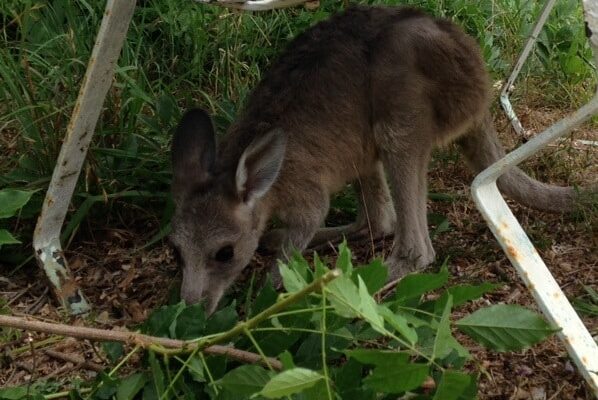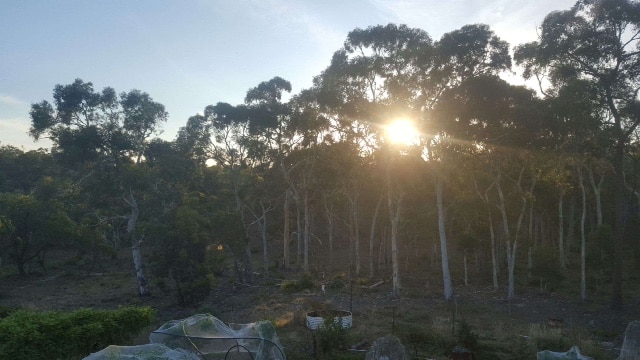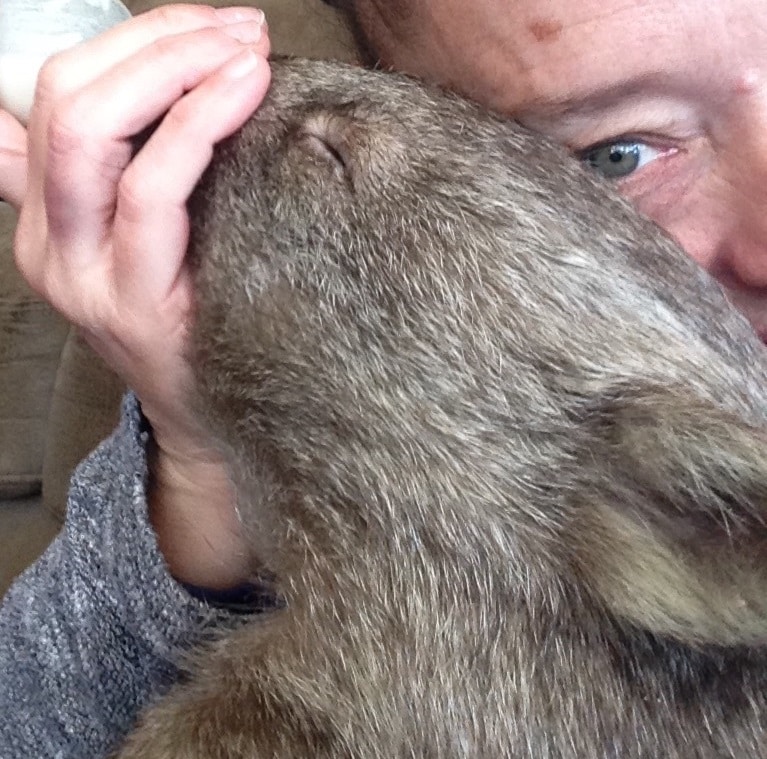Beth Nasser and George Morton are the owners of Wombat Stomp, a property located in Windellama, approximately 40km south east of Goulburn, New South Wales. The property is a residence and dedicated wildlife sanctuary, and it is Beth and George’s intent to utilise the property as sustainably as possible, maintaining the land naturally and with local vegetation. The property will also be used as a sanctuary for wombat rehabilitation through Beth and George’s membership of Wildlife Rescue South Coast.
The property covers 12.15 hectares with local vegetation types including a variety of native bush vegetation such as eucalypt, banksia, and acacia species. No noxious weeds are found anywhere on the sanctuary. Wildlife species known to inhabit the sanctuary includes eastern grey kangaroos (Macropus giganteus), red-necked (Macropus rufogriseus) and swamp (Wallabia bicolor) wallabies, short-beaked echidnas (Tachyglossus aculeatus), brushtail (Trichosurus vulpecula) and ringtail (Pseudocheirus peregrinus) possums, bare-nosed wombats (Vombatus ursinus), yabbies and various microbats. Northern brown bandicoots (Isoodon macrourus) may also live on the property, as evidenced by digging sites. The sanctuary also houses a range of reptiles and amphibians such as lace monitors (Varanus varius), green tree frogs (Litoria caerulea), shingleback (Tiliqua rugosa) and eastern blue-tongued lizards (Tiliqua scincoides scincoides), red-bellied black snakes (Pseudechis porphyriacus) and eastern long necked turtles (Chelodina longicollis).
Birdlife is very abundant on the sanctuary and includes white-necked herons (Ardea pacifica), Australian wood ducks (Chenonetta jubata), Pacific black ducks (Anas superciliosa), laughing kookaburras (Dacelo novaeguineae), welcome swallows (Hirundo neoxena), scarlet robins (Petroica boodang), grey butcher birds (Cracticus torquatus), magpies (Cracticus tbicen), white-winged choughs (Corcorax melanorhamphos), superb fairy-wrens (Malurus cyaneus), red-browed finches (Neochmia temporalis), pied (Strepera graculina) and grey (Strepera versicolor) currawongs, brown tree-creepers (Climacteris picumnus), noisy friarbirds (Philemon corniculatus), eastern spinebills (Acanthorhynchus tenuirostris), black-faced cuckoo shrikes (Coracina novaehollandiae), buff-rumped thornbills (Acanthiza reguloides), grey fantails (Rhipidura albiscapa), white-eared honeyeaters (Nesoptilotis leucotis), owlet-nightjars (Aegotheles chrisoptus), striated pardalotes (Pardalotus striatus), grey shrike-thrushes (Colluricincla harmonica), black kites (Milvus migrans) and wedge-tailed eagles (Aquila audax).
Parrots such as crimson (Platycercus elegans) and eastern (Platycercus eximius) rosellas, sulphur-crested (Cacatua galerita) and gang-gang (Callocephalon fimbriatum) cockatoos, yellow-tailed (Calyptorhynchus funereus) and glossy (Calyptorhynchus lathami) black cockatoos and galahs (Eolophus roseicapilla) are also present.








